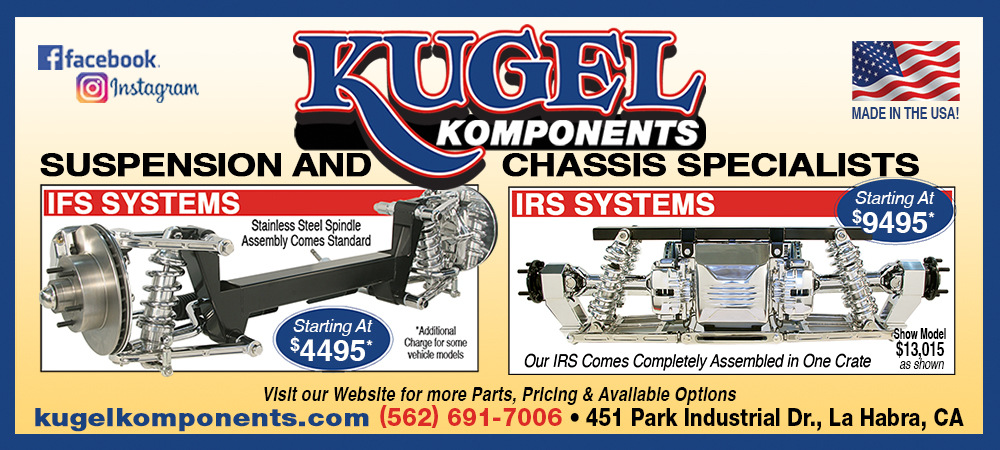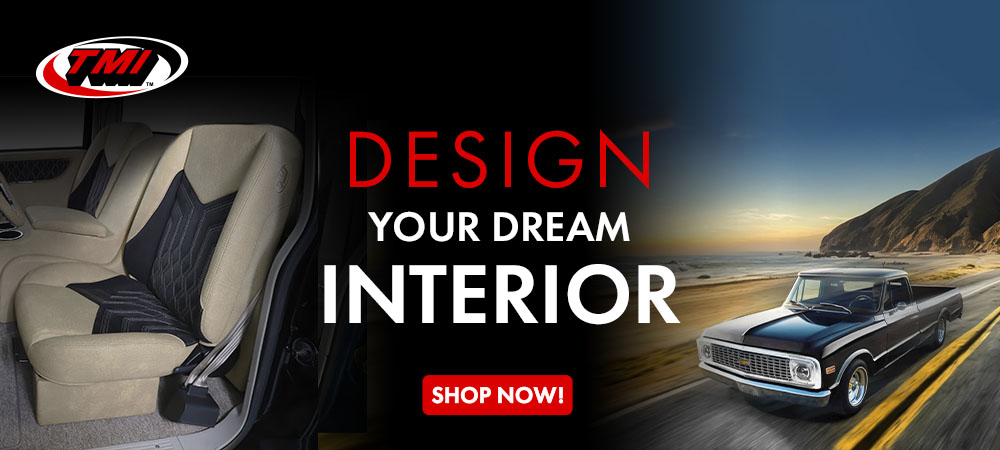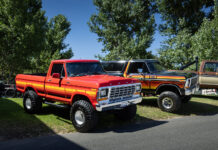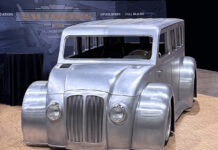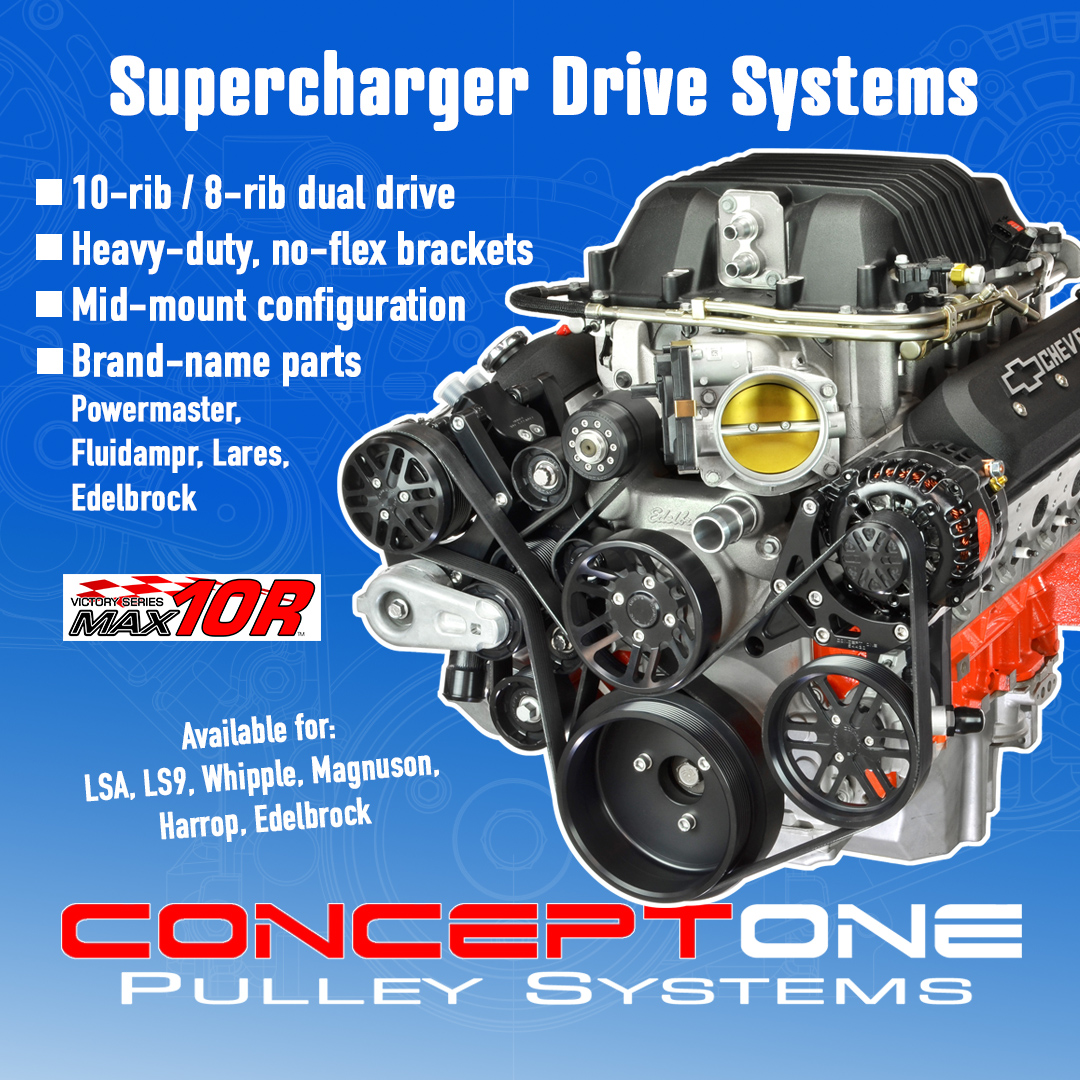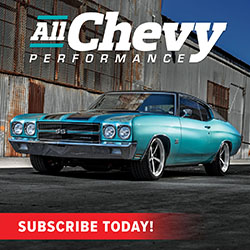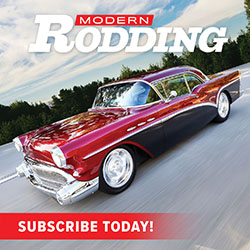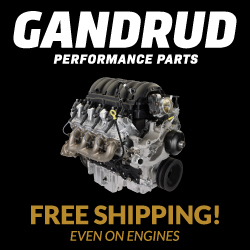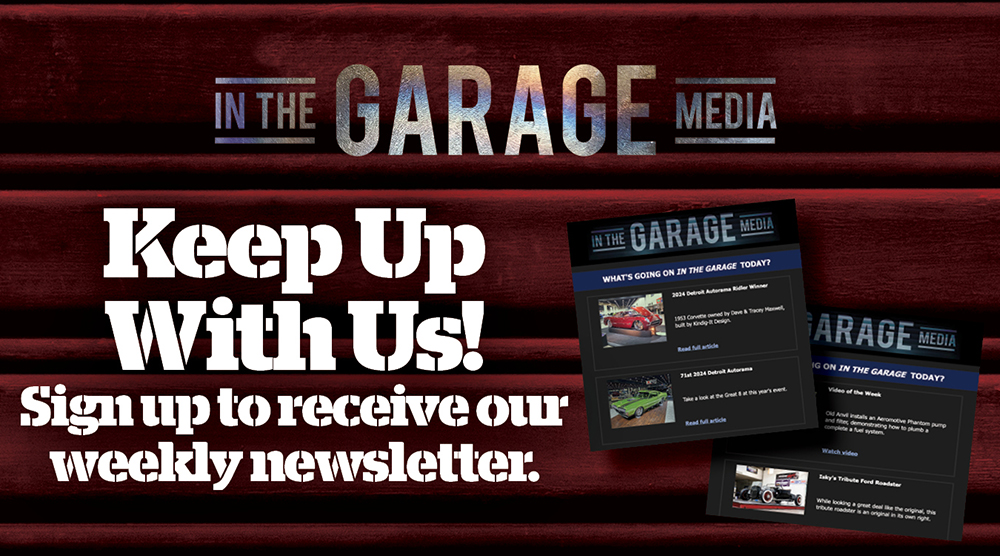By Johnny Rotten Robinson – Images by Tim Sutton
When I began my magazine career back in the early ’90s, one of the first shops I was sent to was Fat Jack’s in Wildomar, California. Unbeknownst to me, its owner/namesake Fat Jack Robinson was a curmudgeon hot rod builder whom my boss at the time, Tom Vogele, had assumed would chew me up and spit me out due to his no-BS attitude. Well, unbeknownst to Vogele, we ended up hitting it off from the get-go due to my no-BS attitude—and the rest is history.
I followed quite a few of Jack’s builds over the years, including his personal ’51 Ford F-1, and in the process became good friends with several of his employees (Ryan Reed, Aaron Broughton, and more) as well as his protégé son, John “Johnny Rotten” Robinson, who’s carried on Pop’s posthumous Fat Jack style—low and mean with the utmost attention to every little detail. When the time came to get some shots of the current and final version of Jack’s big-block–powered Ford, I figured who better to tell the tale. Take it away, John!

“OK, so here goes nothing. My name is John Robinson, the eldest of three children that my pop, ‘Fat Jack’ Robinson had. Rob asked me to write down some history about my dad and how he got started building cars, specifically the ’51 Ford pickup truck in the article. For those who didn’t know him or haven’t heard of him, he was a colorful character, to put it mildly.

“Right or wrong, somehow his reputation preceded him. He was fortunately—or unfortunately—born at a time when cars were what kids did. On my grandfather’s side, he had two uncles who had modified cars. He would tell me about his Uncle Fred, who in the mid ’50s had a chopped Deuce Victoria with big and little wide whites, padded white top and running boards, with a big flathead with four 97s. Then he also had a ’34 Cabriolet that he went to the dump, found some bed posts, and made straight pipes all the way to the back for. This same uncle gave him his first car at 13, a ’40 Ford Tudor sedan that was partially torn apart to use to fix another car. He got it put back together, tried to sell it, eventually cut it up, and sold it for scrap. His next car was a 5-inch chopped Deuce three-window; it was basically stock other than chopped with a dropped axle and big and littles. It eventually got an Oldsmobile engine with a LaSalle top shift box.
Read More: Kerry “Duck” Cunningham’s 1959 Chevy Apache

“In the early ’60s, he had a couple of mild custom Pontiac Bonnevilles, and not long after that he bought another Deuce three-window—this car would basically be where he started building his own stuff. This car eventually became the black car that he built in the early ’70s; it had 15×6 and 16×10 Halibrand magnesium wheels with Firestone dirt track tires in the rear. So basically, he had Hi Boy wheels and tires on a full-fendered car that was all stock bodied, with bumpers, cowllights, headlights, horn, everything. This was the first car to have one of his 7-inch dropped tube axles. Dad was primarily known for stock-bodied cars, sitting as low as he could get them … basically, his stuff was lower than anyone else’s. The story that he told me was that he took it to a couple of different people around the Long Beach/Bellflower area where we lived to do some fabwork for him. The first guy was a well-known Gasser builder at the time. He had him install rear shocks on the car, but when he went to pick it up he had taken a torch and cut up the inner rear wheelwells for clearance, so Dad wanted to kill him. The next guy, he had him build a set of headers for the Oldsmobile that he had installed. When he went to pick it up, the guy had cut the fender flanges at the top of the frame for clearance, so he figured that he could screw up just as bad as them and not have to pay someone else—thus the start of him doing his own work.

“Dad was a carpenter by trade and built his own cars at home in the garage like everyone else did. Not long after, he started doing fabwork and stuff for other people. Around 1975 or 1976, he quit being a carpenter and rented a shop in Cerritos, California. When Steve Davis moved out and went to the beach, he brought body man Ralph Kirby with him, and J&R Hot Rod was born. Soon after, Greg Morrell came on as a painter. After that, he did about a five-year stint restoring Panteras.

“When I was about 12 my pop would take me to the shop on weekends, holidays, and summer vacation—whenever school was out—and I would go to the shop and work. I did all of the typical grunt work, sweeping floors, cleaning parts, washing and waxing cars (which I hated—and still do to this day!), but, I was VERY FORTUNATE that I liked what I saw and what I learned from the people I was exposed to. The cast of characters were primarily drag racers. When I was about 14 or 15, Richard Conklyn came to work for my pop; he was the R part of S&R Race Cars with Steve Plueger, and one of the smartest people I knew. I was also fortunate to be around and work for Lil’ John Buttera, another individual I learned A LOT from.

“Like my pop, I had what I call ‘a real job,’ which I did for 30 years. And like my op, I worked in my garage at home during the evenings and weekends on my own stuff and also on stuff for other people. When my pop needed help, I would go to his shop and do what was needed. My pop did a lot of work for other builders in the area who most don’t know about. In about 1983, we did a big rig with Buttera at the shop for Goodyear tire. Another thing that he did were the very first two OBS trucks, as they are now called, which were lowered by my dad and Boyd Coddington. The first one was for GMC for their booth at the SEMA show that year. Then one of Boyd’s customers saw it and a few weeks later here comes another one. Mind you, there weren’t any kits or dropped spindles available at the time; you couldn’t even buy one of these trucks yet. This was probably August or September of 1987. A couple of years before that we did the orange ’46 coupe for the Nostalgia Drags in Fremont. Because of that car, we started getting requests for chassis parts for round cars. So, my pop and Conklyn designed a line of chassis parts for them.
Read More: Shane Dutka’s Tire-Searing ’71 Ford F100 Sport Custom

Eventually he relocated to Wildomar and built a house and shop on the property, by now the shop name had changed from Fat Jack Enterprises to Fat Jack’s Real Hot Rods & Parts. He continued to build one-off cars, always in his signature style: mostly stock-bodied, extremely low, and all static—no airbags, hydraulics, or any other type of adjustable suspension.

“The truck started out as someone else’s abandoned project. It had a 351 Windsor/C6 combo with a Mustang ll frontend, and 9-inch Ford rear on the original leaf springs. We removed the engine and trans and installed of all things a 430 Buick and Turbo 400 that was left over from another old project. All machinework on the engine was done by longtime family friends the Streagles, at Clay Smith Cams in Buena Park, California, then assembled by myself. We built a new tubular centersection out of 1-1/4-inch-diameter round tube. The front crossmember was raised in the chassis 1-1/2 inches and at that point we bored holes in the front framerails for the rack-and-pinion to go through. The frame is boxed front to rear as well as C-notched for rearend clearance. We built a custom aluminum fuel tank mounted in the rear between the framerails. The interior has aluminum door panel inserts covered in gray leather, as well as a custom package tray built under the dash. The dash is recessed the entire length with a piece of 1/4-inch aluminum covered in carbon fiber with Auto Meter gauges. The front headlight rings were welded to the grille, and the head light buckets were mounted from behind. The grille was also brushed after the silver paint was applied, but before it was sprayed with clear. The front holes in the hood were filled, along with the side hood moldings. The front framehorns were shortened to bring the bumper closer to the front pan, then drilled with holes. The wheels were a gift from longtime friend Boyd Coddington;15×7 and 15×10, respectively. The rear suspension and frontend components are also pinstriped by Dennis Ricklefs, another lifelong friend. It also has bear claw door latched in the B-pillars with bell cranks with a hidden button up in the upper pillars.

“The purple anodizing: my pop had a thing for purple, hence the vast majority of the AN fittings were first stripped of the anodizing, then polished, and then either left polished or anodized purple. I remember when he had Butch Lynch (who worked for us) paint Candy Purple onto the bed wood boards we all started to make fun of him, then not soon later I saw that someone was making stain or paint to do the same thing. Go figure.

“As far as what we are going to do with truck, it sits under a cover out at the family compound that my pop built, (where the photos were taken) awaiting some refinements that need to be addressed. Eventually I’ll get around to installing a larger radiator as well as an EFI unit to make it more comfortable and driveable.”
Click on this issue’s cover to see the enhanced digital version of LEGACY SERIES: Fat Jack Robinson’s 1951 Ford F-1.












